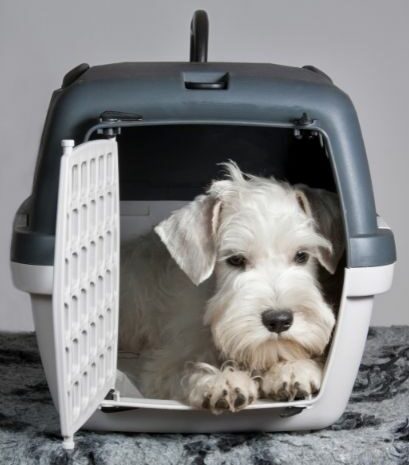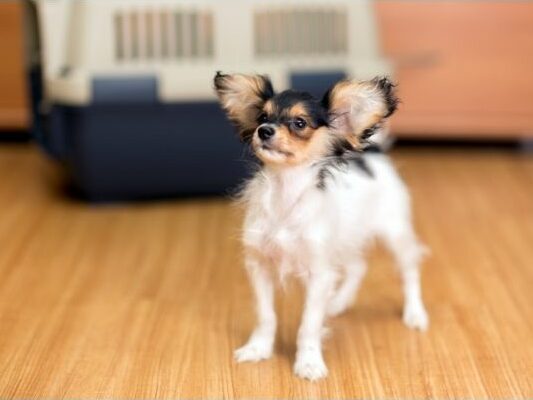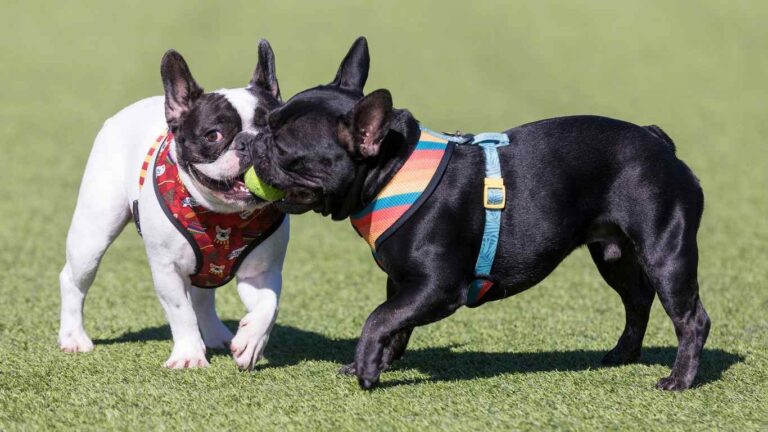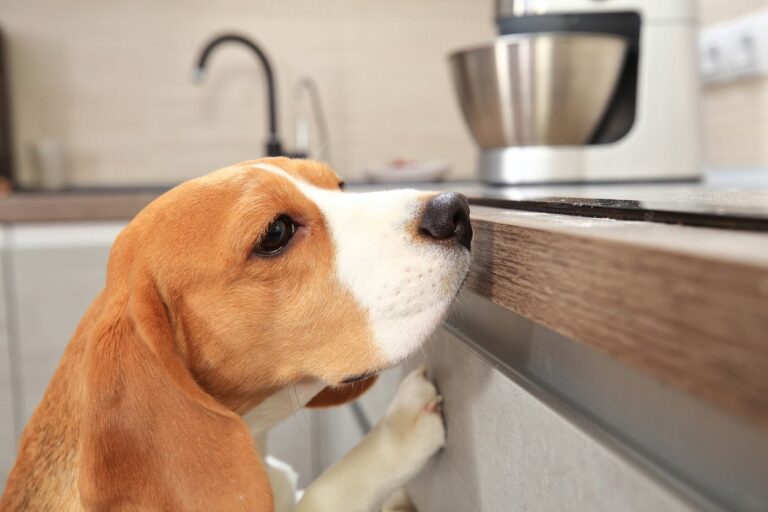Looking for a little guidance regarding crate training? Look no further! Whether you are just starting the process or you’ve dipped your paw into it and came across a few hiccups, we’re here to give you some pointers.
Key Points:
- Choose the right crate for your dog.
- Create positive associations with the crate through the use of food and toys.
- Stay consistent!
Should you Crate Train your Puppy?
Our recommendation is, YES! A crate provides many benefits to you and your puppy, including a safe place when you need to leave them alone, aids in house breaking, and can help prevent separation anxiety. Let’s dive a little deeper into what separation anxiety is and discuss initial steps of crate training to set you and your pup up for success!
Separation Anxiety: What It Is and Isn’t
First, let’s define separation anxiety. Separation anxiety is when a dog exhibits high levels of stress when crated or left alone, often resulting in defecating and urinating, excessive salivation, and/or biting at the crate in an attempt to escape.
It’s important to note the difference between clinical separation anxiety and normal puppy behavior while working on crate training. True separation anxiety usually affects and peaks in middle aged dogs. It is a serious condition that can be just as stressful for the parent as it is for the canine! That being said, puppies will often engage in behavior that can easily be misinterpreted as separation anxiety during the first stages of crate training. For example, when you first bring your puppy home they may whine, bark, cry or paw when inside the crate, however, these behaviors are more likely attention seeking than high level separation anxiety.
Attention seeking behaviors are easily reinforced verbally by saying “you’re ok, Max!” and physically by letting them out of the crate or picking them up. During the crate training process, it can be heartbreaking (and frustrating) to walk away if they are engaging in attention seeking behaviors such as crying or barking. However, “giving in” and letting them out of their crate in these moments can inadvertently reinforce the crying/barking and make the behavior worse the next time you need to leave. Instead, without saying anything, wait out of sight until they are quiet before letting them out of the crate. We want to reward them (let them out) for being quiet! Below we discuss techniques to help prevent separation anxiety in puppies. Keep reading!
If you are concerned about your pup’s behavior and uncertain the level of severity your canine may be displaying, please reach out to see how our trainers and behavior consultants can assist you further.
Benefits of Crate Training
Housebreaking Tool
A crate is an essential tool in house breaking. Here are the protocols we follow when utilizing a crate in potty training:
- Keep them crated in a small area to decrease the likelihood of your puppy having accidents when left alone.
- Avoid using anything absorbent (e.g. bedding or blankets) inside the crate. These items can be easily torn up and ingested (choking hazard!) or used to cover up an accident. It should just be the plastic bottom.
- Feed your puppy directly off the floor of the crate to help create a positive association with the crate itself and reduce the risk of accidents inside the crate.
For more details on potty training information check out our house breaking blog!
Safe and Secure Environment
A crate provides a safe and secure space for your puppy to relax when you leave the house, or maybe just need a break from monitoring your puppy.
Preventing Separation Anxiety
Since you are their favorite person, this can be tricky! Inevitably, you’re going to need to leave your puppy alone at some point. The goal is for your dog to be content in your absence. To start, put them in their crate for short periods of time (5-10 minutes) with a couple durable toys and one of their meals. Each day, increase the amount of time by a few minutes. Just remember to keep an eye on the clock or set an alarm! Even if you work from home, we recommend giving your puppy a couple hours (eventually) of quiet time in their crate each day.

Introducing Crate Training
Step 1: Choosing the Right Crate
We recommend a plastic/airline style crate (safest option) or a wire crate (as long as your puppy isn’t attempting to chew the wiring). Depending on the expected size of your dog, purchase a crate your pup can grow into. Then get a divider to section off the crate as they grow. If you give them too much room, they are more likely to have accidents in the crate. And we definitely don’t want that! They should have enough space to stand up, turn around, and lay down, no more.
Step 2: Introduce Being Inside the Crate Slowly
Some puppies have no trouble going into the crate, while others may need a little encouragement. If your puppy has no trouble and walks right in, fantastic, skip to Step 3! If not, you can begin to encourage your puppy to go into the crate and stay by starting with treats!
- Prop the crate door open so your puppy can walk in and out freely.
- Start by tossing a few treats towards the back of the crate. Anytime they walk into the crate on their own, praise them and give them a treat!
- Practice staying in the crate by luring them into the crate with a treat in your hand. Once they are in the crate, praise and feed them. Gradually, work up to shutting the crate door, giving them a treat and opening it up again. You can practice this exercise 5 minutes daily to get your pup used to entering and staying in their crate.
Step 3: Safety
Safety first! Make sure to remove all collars, tags and harnesses off your pup before leaving them in the crate. If their tag gets caught in the crate they could strangle.
Step 4: Create a Positive Association with the Crate
Remember, the goal is to teach your puppy to associate the crate with things they enjoy, like food and toys! Here are some examples:
- Feed their kibble directly off the plastic floor of the crate and/or prepare a Kong toy filled with kibble and/or peanut butter to capitalize on the positive association between their meals and the crate.
- Give 5-6 appropriate toys that do not break/tear easily (if at all) to ensure there are no choking hazards. Chew toys provide mental stimulation, We like Kongs and inedible Nylabones!
Trainer Tip: Freezing a peanut butter filled Kong will keep them preoccupied longer, tire them out and encourage them to nap! If there’s a peanut allergy in the home feel free to use cheese instead. We like squeeze cheese or cream cheese (but not too much)!
Step 5: Be Patient (and Consistent!)
It will take time for your puppy to acclimate to their new home, you’ll want to prepare for at least 6 months of training. We understand (and empathize!) that crate training can sometimes be challenging in the short term but by sticking with it, crate training can provide a plethora of benefits long term. Establishing a routine and ensuring your puppy is receiving enough exercise can help set you and your pup up for success! Remember to stay calm and consistent, you’ve got this!
If you are interested in more information or guidance personalized to you and your dogs’ needs feel free to contact our team. We’re here to help!




